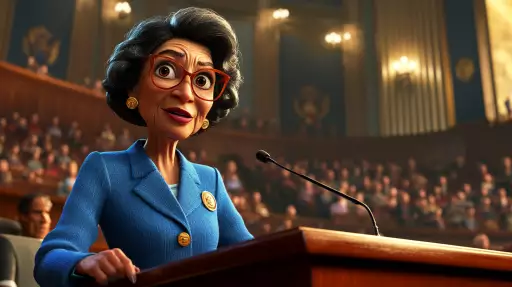Explore the Best AI Image Gallery

Beyond the Brush: AI Image Generators and the Future of Creativity
The art world is abuzz with a new wave of innovation, one driven by artificial intelligence (AI). AI image generators, capable of producing stunning visuals from text prompts, are revolutionizing the creative landscape, blurring the lines between human imagination and machine capability. This blog post delves into this exciting frontier, exploring the potential uses, ethical considerations, and future trends shaping the intersection of AI and creativity.
A Canvas Painted by Code
AI image generators utilize sophisticated algorithms, often based on deep learning models, to analyze vast datasets of images and learn the intricate patterns and relationships that define visual aesthetics. When presented with a textual description, known as a prompt, these algorithms generate original images that correspond to the given concept.
This technology opens up a realm of possibilities for artists, designers, and anyone seeking to express their creative vision. Imagine crafting intricate illustrations, designing unique product concepts, or visualizing abstract ideas with just a few words.
Applications Across Creative Industries
- Art and Design: AI generators can assist artists in generating novel concepts, exploring different styles, and producing unique artworks. They can also be used for creating personalized designs for products, apparel, and interior spaces.
- Advertising and Marketing: Businesses can leverage AI to generate visually compelling content for advertising campaigns, social media posts, and marketing materials, saving time and resources.
- Entertainment and Gaming: AI image generators can contribute to creating immersive game environments, realistic character designs, and captivating visuals for films and animations.
Ethical Considerations: Navigating Uncharted Territory
While the potential of AI image generation is immense, it also raises important ethical considerations:
- Copyright and Ownership: Who owns the copyright to AI-generated images? Is it the creator of the prompt, the developer of the AI tool, or the AI itself?
- Bias and Representation: AI algorithms are trained on existing datasets, which can contain biases that reflect societal stereotypes. This can result in AI-generated images perpetuating harmful representations.
- Misuse Potential: The ability to create realistic synthetic media raises concerns about its potential misuse for creating deepfakes, spreading misinformation, or manipulating public perception.
The Future of Creativity: A Collaborative Landscape
AI image generators are not intended to replace human creativity but rather to augment and enhance it. The future likely holds a collaborative landscape where AI tools empower artists and designers to explore new frontiers, push creative boundaries, and unlock innovative solutions.
As this technology continues to evolve, ongoing dialogue and collaboration between artists, technologists, policymakers, and the public are crucial to ensure its responsible development and ethical deployment. By embracing a thoughtful and inclusive approach, we can harness the power of AI image generation to foster a more vibrant and inclusive creative future.


![**Representation: A teenager smiling while thinking about a friendly dog, a comic-style thought bubble with a friendly dog inside. Graphic style: Line drawing, cartoon style, influenced by Franco-Belgian comics, thick black lines, simplified design, vector, black and white only, in the style of Keith Haring or the French comic strip "Alinéa". [IMPORTANT]: A single continuous line extending from one side of the image to the other, minimalist, strong outlines, line drawing, without lifting the hand, ultra-simplified, no shading, entirely white image, drawing created in the center of a sheet of paper. --ar 16:5** - <@627984126871470085> (fast)](https://images.ai-img.art/thumbnails/150/6fc850f638e3dee0c4b121acecad2c8419e02bdeac7f871d625f1003c1c3abe1.webp)

](https://images.ai-img.art/thumbnails/150/9d51c5e673b4f2068b7b01abc35425a06f173b76303adf9ad29ca14302c25b18.webp)


![**Representation: A dog acting as a private tutor to a child. The dog holds a ruler in its paw and stands at the blackboard to explain a dog diagram to the child. Graphic style: Line drawing, cartoon style, influenced by Franco-Belgian comics, thick black lines, simplified design, vector, black and white only, in the style of Keith Haring or the French comic strip "Alinéa". [IMPORTANT]: A single continuous line extending from one side of the image to the other, minimalist, strong outlines, line drawing, without lifting the hand, ultra-simplified, no shading, entirely white image, drawing created in the center of a sheet of paper. --ar 16:5** - Variations (Strong) by <@627984126871470085> (fast)](https://images.ai-img.art/thumbnails/150/f4e034998ccd869d8a061fd12017514fcd92210eb33d4222dc9b54716223f4dd.webp)



![**Representation: A dog acting as a private tutor to a child. The dog holds a ruler in its paw and stands at the blackboard to explain a dog diagram to the child. Graphic style: Line drawing, cartoon style, influenced by Franco-Belgian comics, thick black lines, simplified design, vector, black and white only, in the style of Keith Haring or the French comic strip "Alinéa". [IMPORTANT]: A single continuous line extending from one side of the image to the other, minimalist, strong outlines, line drawing, without lifting the hand, ultra-simplified, no shading, entirely white image, drawing created in the center of a sheet of paper. --ar 16:5** - <@627984126871470085> (fast)](https://images.ai-img.art/thumbnails/150/7a854648a81e51241dcca8d24dd6e3bfcf07ad1df51baf401c9b729f4cf411fa.webp)


](https://images.ai-img.art/thumbnails/150/51c93500396faff4e7fa8b42bc68033067b16b2230e3496e95c482a581ff0fe9.webp)















](https://images.ai-img.art/thumbnails/150/157712d76865d557120f9baf988de3d0525225295a2789c89bf2c4a5a96a03d1.webp)













